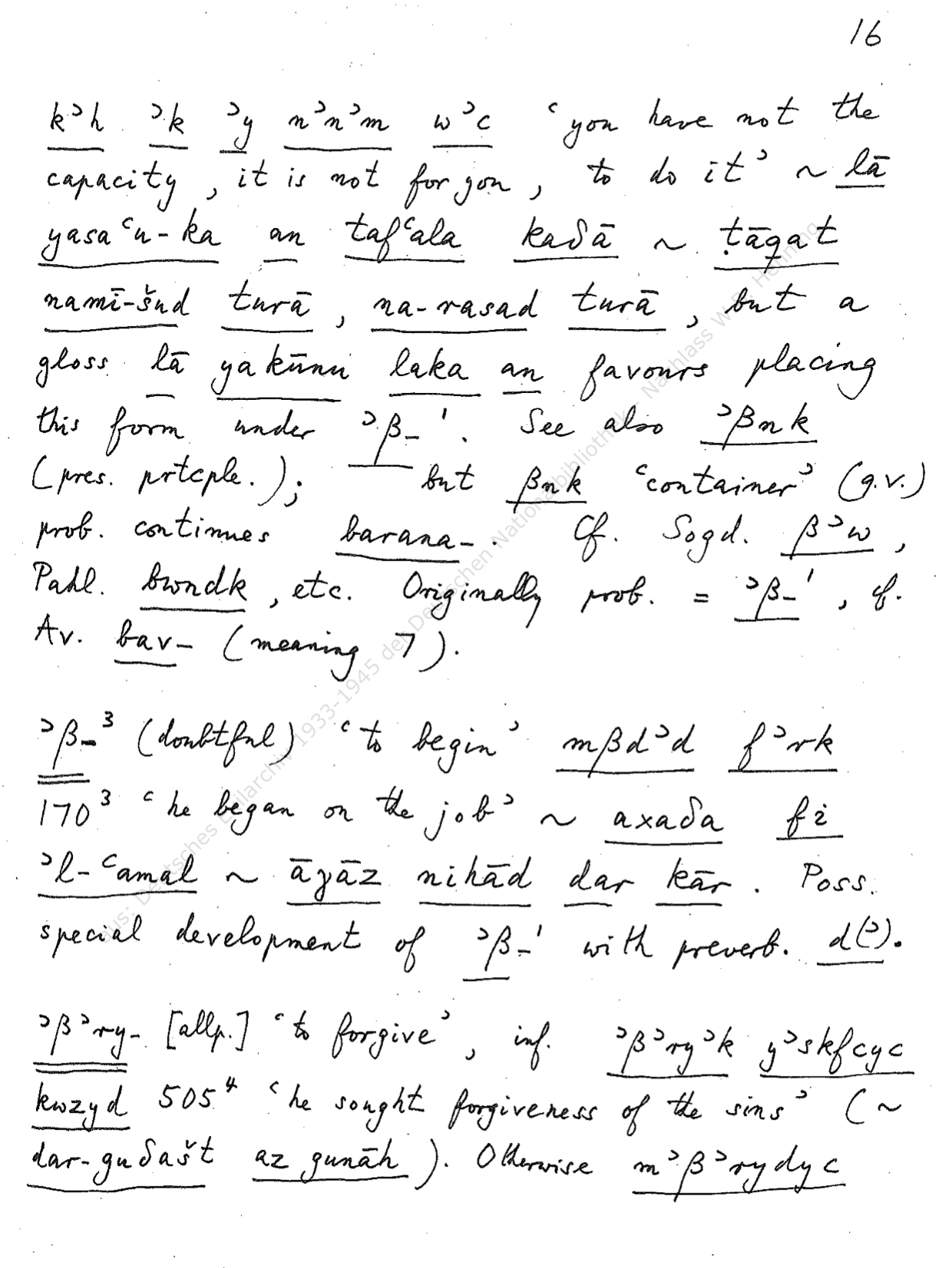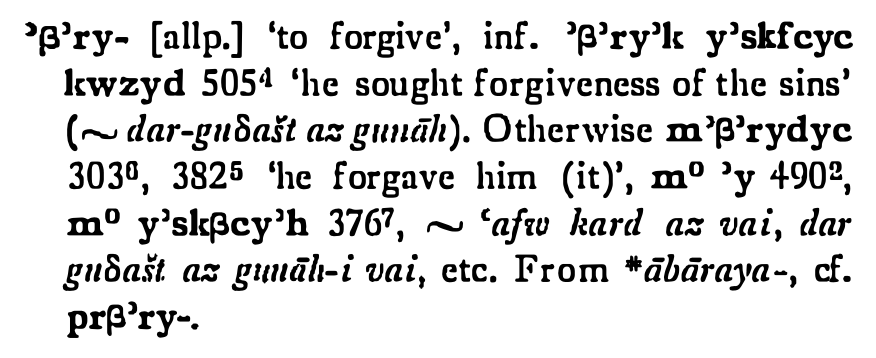Credit for efforts to create a comprehensive, or at least extensive, glossary of the Chorasmian language are due, in the first place, to those medieval scribes who thought it useful to insert Chorasmian translations into copies of the Arabic Muqaddimat al-Adab (more on that, and on them, in due course!).
In modern times, the idea of compiling all the attested Chorasmian materials into a dictionary goes back to Walter B. Henning, the pioneer, together with Zeki Velidi Togan, of Chorasmian studies. Having begun working on Chorasmian in the 1930s, Henning had lost interest for a while due to the plagiarism of A.A. Freiman and did not publish anything on the language until the 1950s (Henning 1955:423).
It is unclear when Henning began returning to Chorasmian matters, but by the mid-1950s point, he had organized the words and phrases attested in the known manuscripts of the Muqaddima and Qunya (all discovered by Togan) into a card catalogue. At a 1954 conference, he announced “I have now compiled nearly a complete glossary which I hope to publish in the near future” (Henning 1956:43). Other obligations and projects intervened to delay the conversion of this card index into publishable dictionary form, however, and it was only in the year or so before his death in Jan. 1967 that Henning began to draft full entries.

At the time of his passing, approximately 260 entries had been completed, by hand as was his norm, filling 108 pages. These entries were based mainly on two manuscripts of the Muqaddima: the substantial glosses in the Yusuf Aǧa MS 5010 ms. (Togan 1951), and Hacı Beşir Aǧa MS 648 (at that time unpublished), as well as on some then-unknown manuscripts of the Qunya available to him.
Owing to the nature of the language, in which hundreds of words begin with a vowel written by means of the letter alif ʾ, these 260 entries only take us from ʾ- up to ʾkw-. Substantial as it is, this amounts to barely halfway through the first letter of the alphabet! The pages were sent after Henning’s death to David MacKenzie, who by then had established himself as the major authority on the language. The latter apparently had no access to other materials from Henning. MacKenzie published the entries with essentially no modification, adding only about 140 brief additional entries where warranted by cross-references in the completed part, as A Fragment of a Khwarezmian Dictionary in 1971. The handwritten pages were eventually returned to Henning’s Nachlass.
Besides the initial work in collecting, deciphering, and etymologizing Chorasmian words—though much of this was expanded and improved upon by MacKenzie later—one important thing about the Fragment is that Henning, perhaps inadvertently, established the lemma format which MacKenzie’s subsequent work on the Chorasmian dictionary would adhere to exactly. We’ll explain what we think are the downsides of this format in another blogpost; suffice it to say for now that it is not very comprehensible to someone not very familiar with Chorasmian literature.

Here ends Henning’s part in the story of a Chorasmian dictionary. Although his card catalogue is still extant, and may have some interesting notes and etymologies, it does not seem to have been used by any subsequent scholars. Moreover, the correct understanding of Chorasmian grammar and historical linguistics was developed much, much further in the following decades by Henning’s student David MacKenzie. It was he who took up the project of finishing a Chorasmian dictionary, laboring over it for the next three decades.
